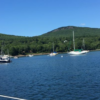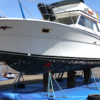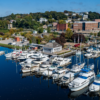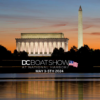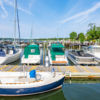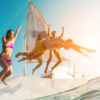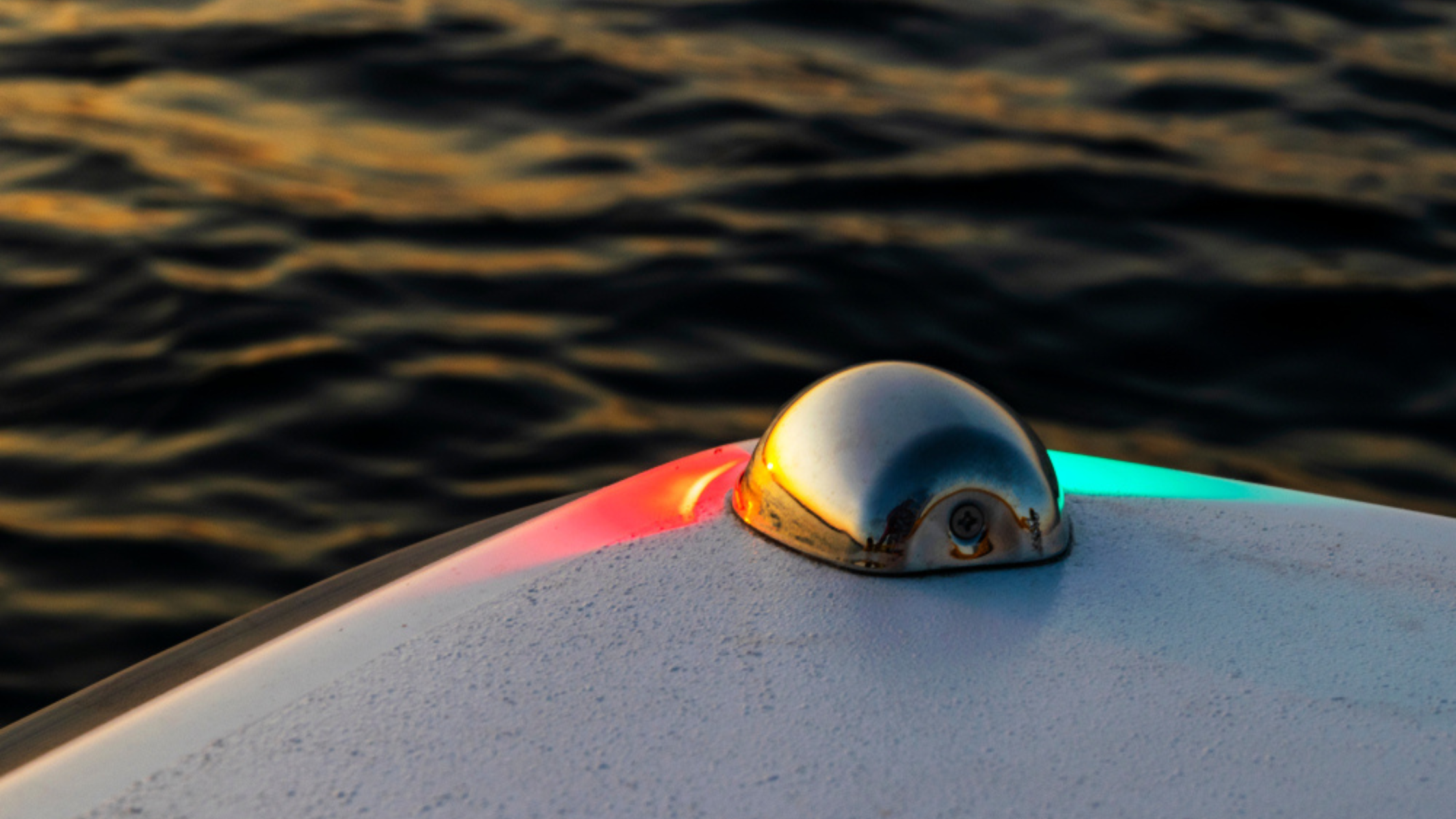
Understanding how vessels communicate via lights and day shapes helps minimize the chance of a collision at sea. You don’t need to remember each combination, but you should be familiar with a few key ones to stay safe on the water.
Boat navigation lights and shapes are tools used to indicate what the vessel is doing and the direction in which it’s moving. All boats have basic navigation (or running) lights for when they’re underway at night or in reduced visibility. Running lights typically include red (port), green (starboard) and white (steaming or stern). Additional lights tell you what the vessel is doing like anchoring, towing, fishing, sailing without auxiliary propulsion, and so on.
Day shapes are signals used from dawn to dusk that correspond to various configurations of lights used at nighttime. These day shapes are placed in various parts of the rigging or superstructure.
Both boat navigation lights and day shapes are defined by the International Regulations for Preventing Collisions at Sea (ColRegs) and you should be familiar with a few for greater situational awareness.
Navigation lights
Red, green, white, blue and yellow lights may be arranged in various combinations to indicate what the boats around you are doing. Lights are specified as to the degrees or angles from which they are visible. Some common combinations include:
-
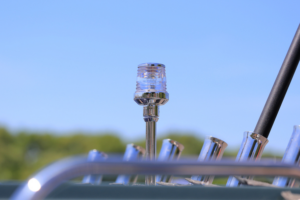
Navigation Light | Viktor Prymachenko on Shutterstock
All-around (360 degree) white light: Vessel anchored.
- Red over green: Vessel sailing without engine engaged.
- Red over red: Vessel not under command – potentially drifting.
- Red over white: Vessel engaged in commercial fishing at night.
- Green over white: Vessel actively engaged in trawling at night.
- White over red: Harbor pilot.
- White over white: Vessel towing – short tow – do not approach.
- White over white over white: Vessel towing – long tow – do not approach.
- Red over white over red: Vessel restricted in ability to maneuver for a variety of reasons – do not approach.
- Red over red over red: Vessel restricted by draft.
- Yellow (amber) lights: Designate vessel towing/pushing or a submarine depending on how the lights are displayed.
- Blue lights: Authority vessel such as a police boat.
Day shapes
Day shapes are shown at the masthead or in the “rigging” from dawn to dusk. They’re black geometric shapes (ball, cone, cylinder and diamond) that can be used alone or in various combinations to denote vessel status. Boats under 7 meters (23 feet) and in some cases 12 meters (39 feet) aren’t usually required to display day shapes, but even if you don’t need to display them, you should know what they mean to understand what is happening around you.
-
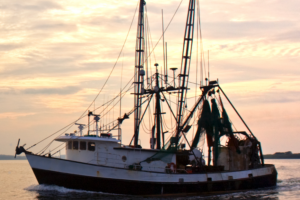
Commercial Fishing Vessel with Day Shapes | Stephen B. Goodwin on Shutterstock
One black ball: Vessel anchored.
- Two black balls displayed vertically: Vessel not under command – do not approach.
- Three black balls displayed vertically: Vessel aground.
- Three balls in a cross formation: Minesweeper – do not approach.
- One cone pointing downward: Vessel under sail.
- Two cones pointing toward each other: Vessel engaged in commercial fishing.
- One diamond: Vessel towing – do not approach.
- One ball, one diamond, one ball arranged vertically: Vessel restricted in its ability to maneuver – do not approach.
- One cylinder: Vessel constrained by draft.
Pro tips
It’s hard to remember these and dozens of other complex light and shape configurations and these combinations look different depending on whether the vessel is bow or stern or at some other angle to you. You can buy a comprehensive cheat sheet called LIGHTrule from Weems and Plath. This easy-to-use tool is shaped like a large slide rule and identifies 60 light combinations from bow, stern, port and starboard angles, and 15 corresponding day shapes. It even includes sound signals used in fog or during times of limited visibility. The LIGHTrule takes up very little space aboard and it’s perfect for a quick reference any time day or night.
Some rules of thumb also help.
- If you see both red and green lights, the vessel is coming head-on.
- If you see a white light only, the vessel is moving away from you or is anchored.
- If you see a red light (with or without a white behind it) that vessel is coming from your right side and has the right of way in a crossing situation.
Not so difficult
Take some time to review lights and day shapes and use a book or the LIGHTrule and soon the process of identifying vessels during the day or night will seem much easier. Better yet, your safety will increase with your knowledge.



